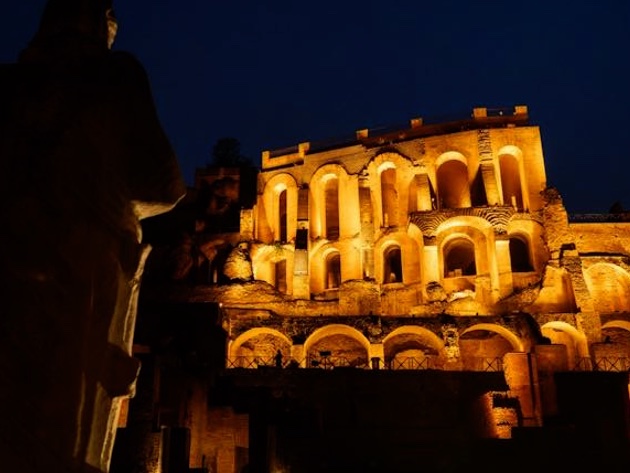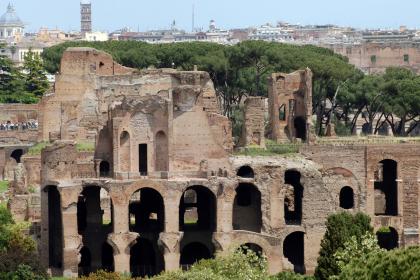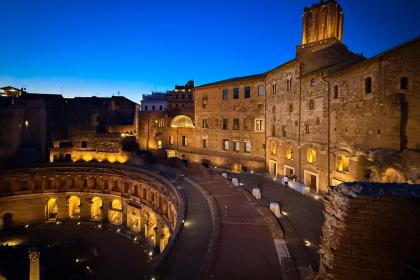
The Domus Tiberiana is the first true imperial palace, built on the northwestern slope of the Palatine Hill in the 1st century AD by Emperor Tiberius, most likely on the site of the emperor's birthplace, combining several late Republican-era residences. The palace, in addition to the residential section, included vast gardens, places of worship, quarters for the Praetorian Guard to protect the emperor, as well as a service quarters overlooking the Roman Forum.
This side of the Palatine was a favourite spot for Roman aristocratic families to build their homes due to its easily accessible position from the valley of the Roman Forum, as attested by literary sources and confirmed by excavations.
The first phase attested by archaeological investigations is the Neronian one, dating to the aftermath of the fire of 64 AD, or concurrently with the construction of the Domus Aurea; other significant renovations were carried out under the emperors Domitian (81-96 AD) and Hadrian (117-138 AD), until it reached an extension of approximately four hectares. The imperial palace, however, continued to be used until the 7th century AD, when it was chosen as the papal seat by Giovanni VII.
After centuries of abandonment, in the mid-16th century, the Farnese family built the Horti Farnesiani on the scenic terraces of the Domus Tiberiana, a wonderful garden of delights intended to house a new court.
THE TOUR
The new tour route, which unfolds within the imperial palace, passing beneath the majestic arches of the service area, is nestled within the hollow substructures of the north façade. It is divided into seven exhibition rooms, four of which are interconnected and offer a privileged view of the Roman Forum. Two multimedia rooms on the opposite façade host a documentary and a holographic reconstruction of the monument. A tactile tour accompanies the visitor. As the rooms unfold, visitors are treated to the view of the extraordinary, recently restored architecture, the service areas with the imperial baths and related infrastructure, and the stucco-decorated surfaces that adorn the so-called Caligula Bridge, against a backdrop of paintings depicting scenes from the life of the imperial court.
The museum's layout is organized thematically within the spaces of the Hadrianic-era substructure, intended to house services, retail shops, and presumably administrative activities.
Photo: Domus Tiberiana Facebook official page
The Roman Forum and the Palatine

 Condividi
Condividi
The Flavian Amphitheatre (The Colosseum)

 Condividi
Condividi
The Trajan's Markets - The Museum of the Imperial Fora

 Condividi
Condividi
Information
1-26 March and 1-29 October > Saturday, Sunday and Monday 9.30-16.30 (last admission at 16.15)
27 March - 30 September > Saturday, Sunday and Monday 9.30-18.15 (last admission at 18)
30 October - 28 February > Saturday, Sunday and Monday 9.30-15.30 (last admission at 15.15)
 Condividi
Condividi
Location
To find out about all accessibility services, visit the Rome accessible section.











































